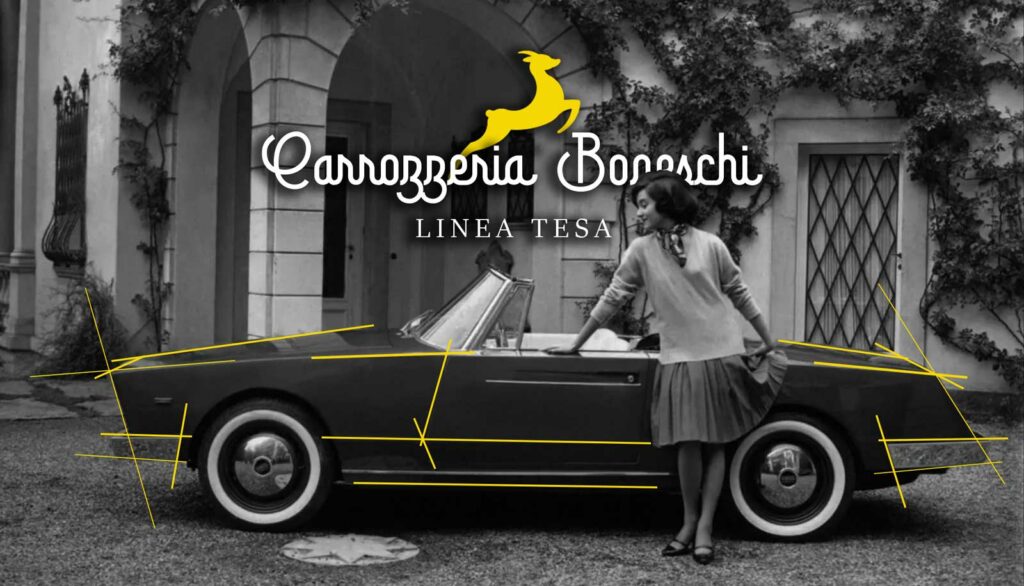
The origin
During the transition into the 1960s, Carrozzeria Boneschi, in a creative partnership with designer Rodolfo Bonetto, initiated a significant stylistic movement dubbed “Linea Tesa.” This innovative design ethos, as its name suggests, was characterized by its distinct emphasis on sharply defined lines and meticulously crafted cuts, standing in stark contrast to the prevailing design norms of its time. While Carrozzeria Boneschi’s boldness didn’t immediately translate into widespread success, it foreshadowed the stylistic shifts of the subsequent decades, particularly in the 1970s and 1980s.
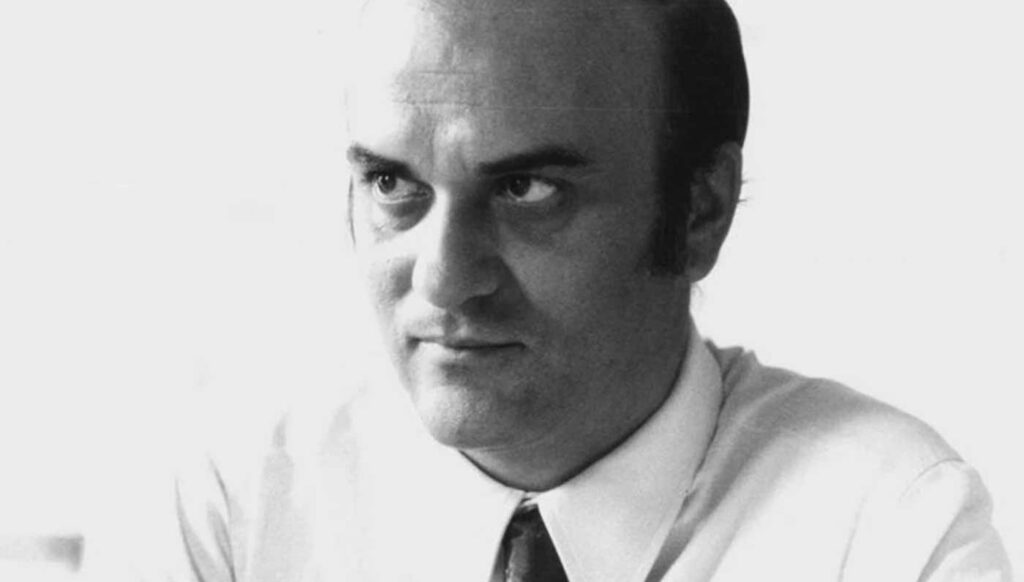
Rodolfo Bonetto
Rodolfo Bonetto, a high school student, abandoned his career as a jazz drummer to devote himself to design. This passion for him was manifested thanks to his paternal uncle Felice Bonetto, a famous racing driver of the early fifties, who introduced him to the motor world, and so the young Bonetto, began to draw sketches of cars.
Embarking on his career as a self-taught designer, Bonetto first delved into the world of design consultancy at Pininfarina, where he refined his skills from 1951 to 1957. It wasn’t until 1958 that he took the leap into independent design entrepreneurship, establishing his own studio in Milan. However, it was with Carrozzeria Boneschi that Bonetto truly found his creative stride, notably pioneering the design trend known as “Linea Tesa.” This collaboration proved fertile ground for Bonetto’s innovative vision, giving rise to a plethora of iconic models that epitomized this distinctive aesthetic. Additionally, Bonetto’s flair for Linea Tesa design extended beyond his work with Carrozzeria Boneschi, with notable collaborations also taking place with Carrozzeria Viotti, further cementing his influence in shaping the design landscape of his era.
During his long career as a designer he created projects in the most diverse fields of industrial mass production: household appliances, car bodies, sanitary ware, machine tools, electronic devices, musical instruments, televisions, suitcases, hi-fi systems, furniture and appliances for lighting.
Bonetto taught industrial design at the Hochschule für Gestaltung in Ulm from 1961 to 1965, and at the ISIA in Rome from 1974 to 1979. He held the positions of president of ADI from 1971 to 1973, and of ICSID from 1981 to 1983, associations of which he was a member of.
Rodolfo Bonetto designed about 1000 products including the interiors of the Fiat 131 Supermirafiori, Tipo, Croma, Y10, Punto.
He was awarded 8 Compassi d’Oro, the last of which shortly after his death in 1991, as a tribute to his thirty-year career. Since then, his design studio has been directed by his only son, Marco Bonetto, who further expands the design activity also in the automotive sector.
1958 Innocenti Goggomobil Weekend
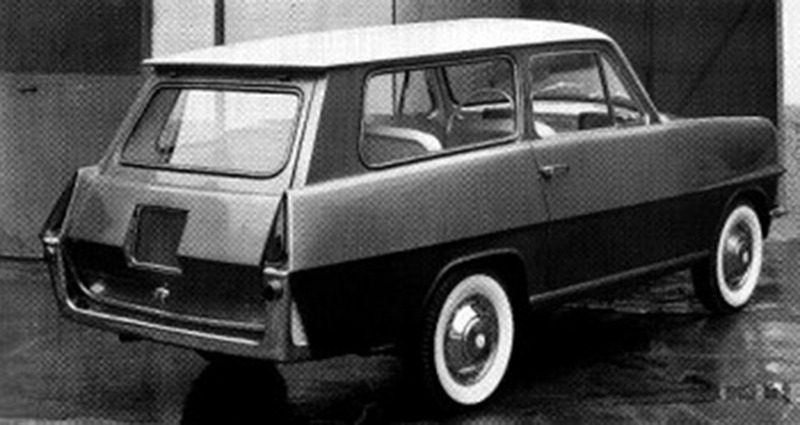
A concept for a compact “Giardinetta” based on the Goggomobil chassis, featuring subtle overseas-inspired “fins” accents in its rear view. This model, a collaborative effort between Carrozzeria Boneschi and designer Bonetto, marked the inception of the iconic “Linea Tesa” style.
1960 Fiat 1500 Spider
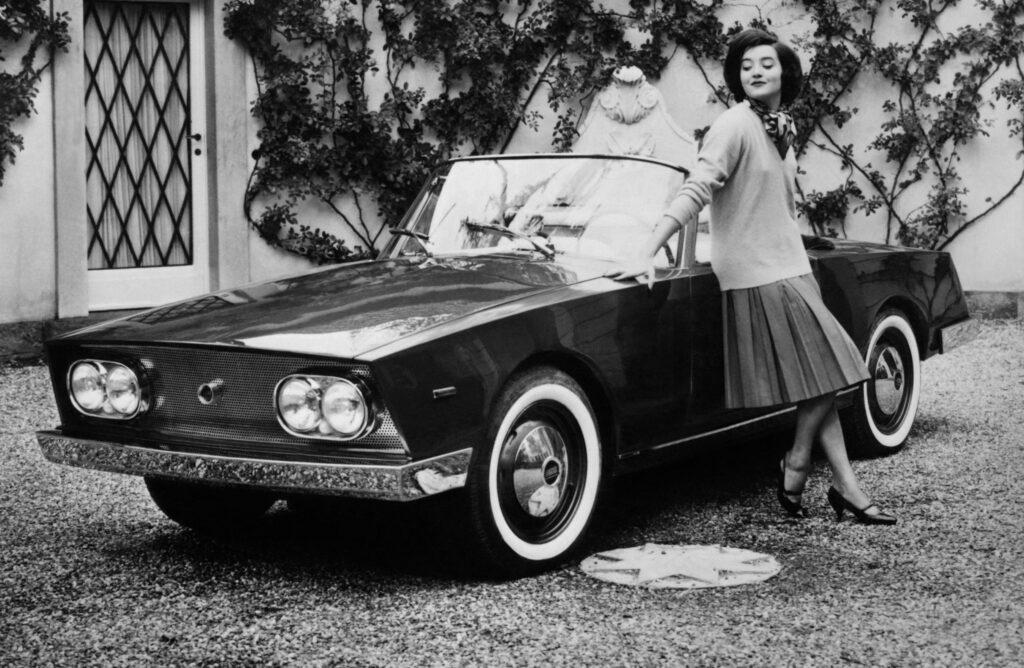
The partnership with designer Bonetto persisted with the creation of a unique vehicle based on the Fiat 1500. Unveiled in 1960, Bonetto crafted a spider featuring unconventional lines, characterized by a prominent full-grille front housing “floating” headlights.
1960 Fiat 2100 Coupé
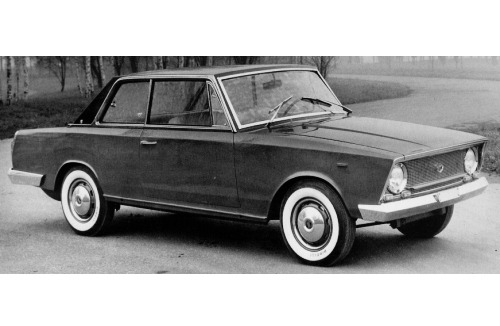
Following the Fiat 1500 project, Carrozzeria Boneschi unveiled a berlinetta model built on the Fiat 2100 chassis. Continuing the design language established in the Spider variant, this one-off creation showcased similar features such as the distinctive suspended headlights and pronounced front line.
1961 Lancia Flaminia Amalfi
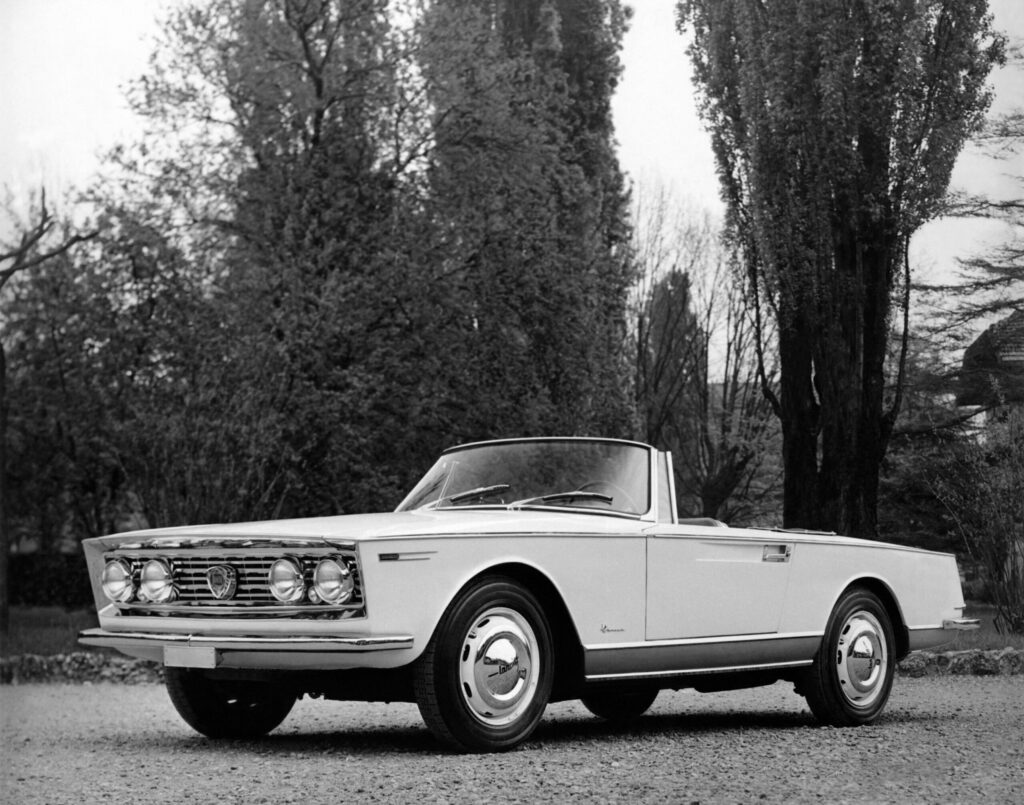
Arguably the quintessential embodiment of the “Linea Tesa” style, the Lancia Flaminia Amalfi emerged as a standout creation. Built on chassis 824.04, originally intended for the Touring coachbuilder, this remarkable vehicle featured a striking cream color paint adorned with a complementary red lower band, echoing the hues of its meticulously crafted interior.
1961 Alfa Romeo 2000 Sprint Coupé
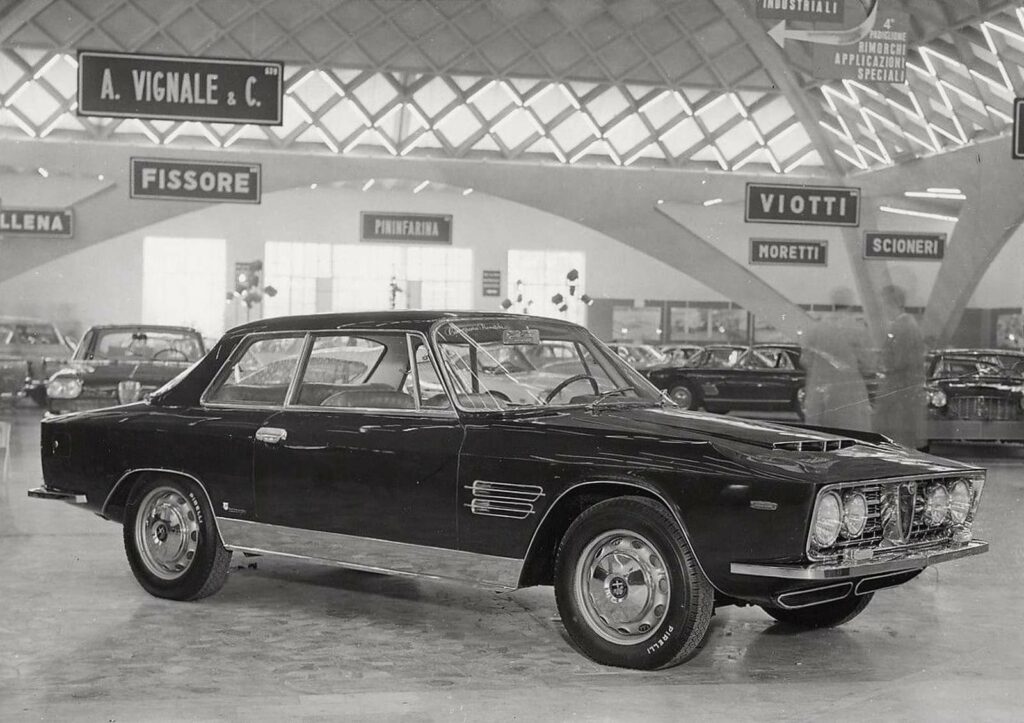
The Linea Tesa aesthetic extended its influence to an Alfa Romeo chassis as well. Revealed at the prestigious 1961 Turin Motor Show, this unique creation, built on a 2000 Sprint chassis, boasted an array of visually captivating chrome elements, further accentuating its allure.
1961 O.S.C.A. 1600 GT Swift
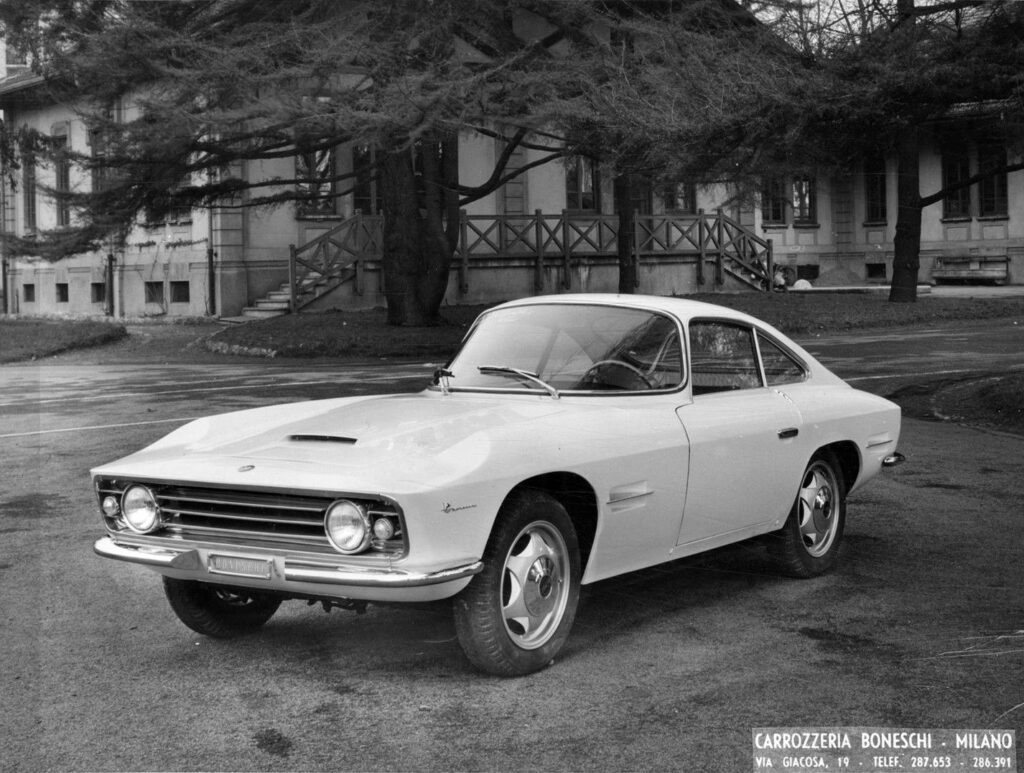
Carrozzeria Boneschi has tried its hand with the Linea Tesa style also on sports Coupe, in this case based on the O.S.C.A. chassis. Although less evident, the stylistic elements are still present, especially in the front. A 2nd version with different headlight was also made.
1962 Maserati 3500 GT Tight
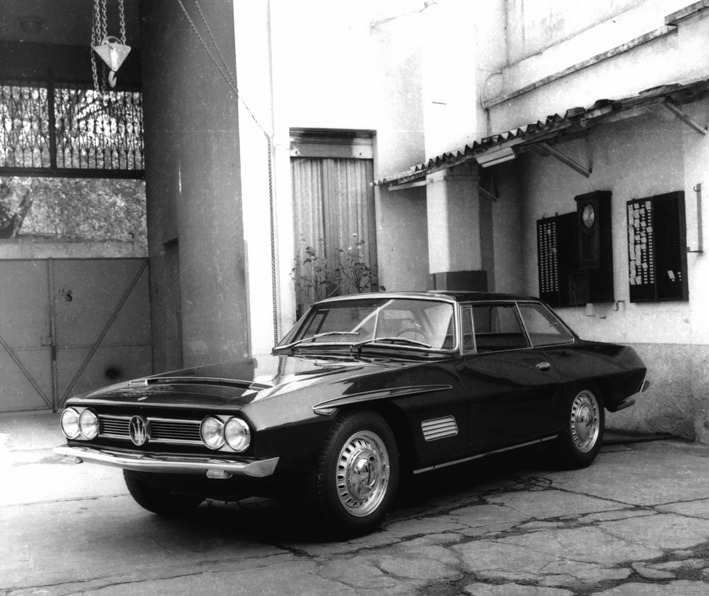
The “Linea Tesa” style made its mark on a Maserati chassis, debuting at the 1962 Turin Motor Show and subsequently showcased again the following year at the Geneva Motor Show, albeit with minor adjustments. Despite its presence on such a prestigious platform, the reception from both the public and the press was lukewarm, largely due to its departure from the prevailing design trends with its square lines.
1963 Ford Fairlane
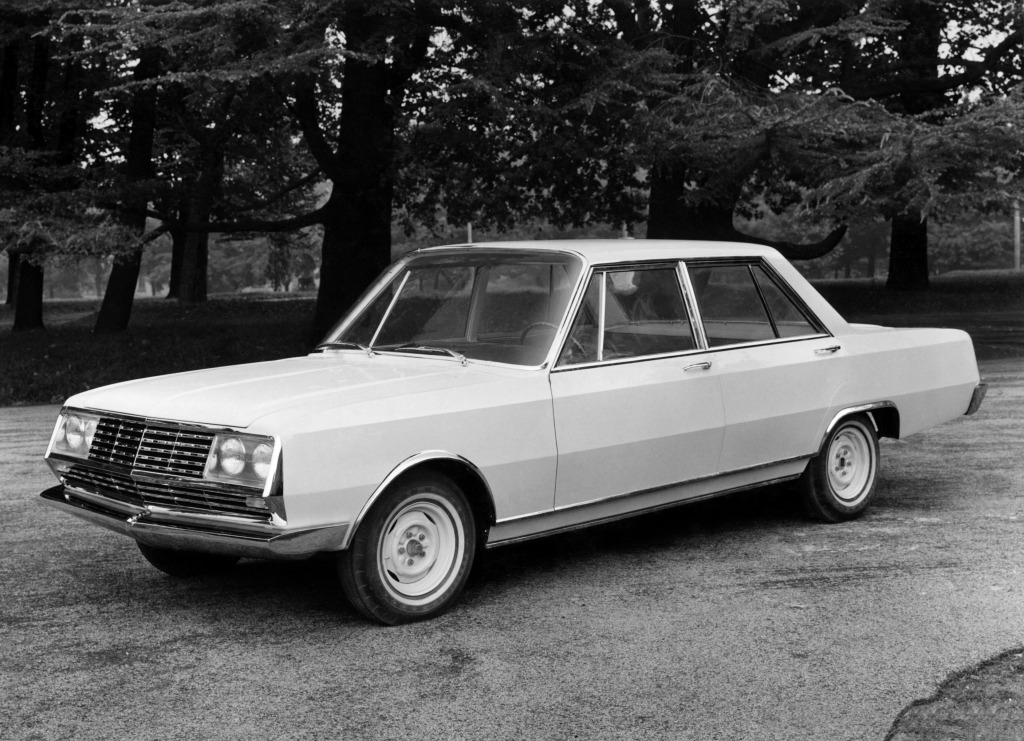
The proposal of the Linea Tesa style on an American chassis of the Ford Fairlane. Here, the typically squared lines were less pronounced, indicating the evolution of designer Bonetto’s aesthetic and the Linea Tesa style itself. This adaptation reflected a shift towards a more refined and harmonious design language, showcasing Bonetto’s versatility and adaptability across different automotive platforms.
1963 Alfa Romeo 2600 Cabriolet Studionove
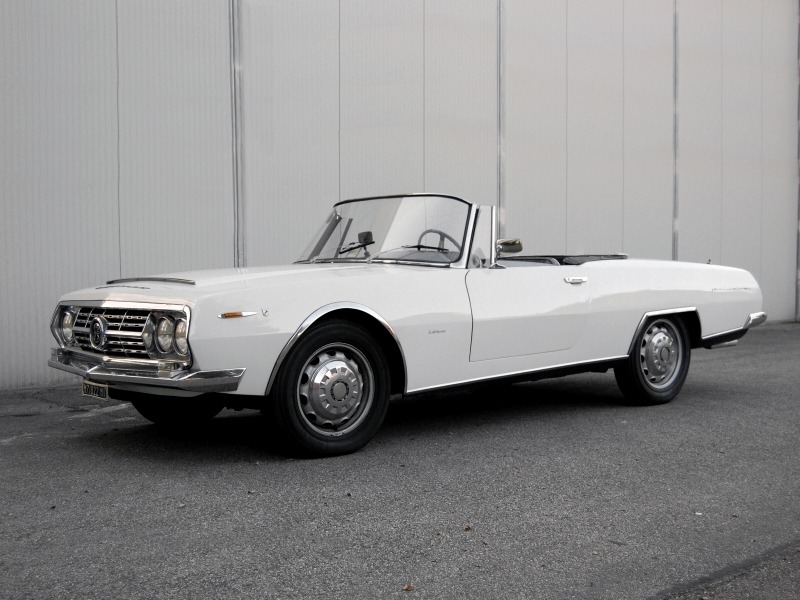
Dubbed Studio 9, the ninth project within the Linea Tesa style, this unique creation, built on an Alfa Romeo 2600 platform, diverged from the classic Alfa scudetto shield emblem. In a departure from previous models, the sharp cuts that were characteristic of the Linea Tesa aesthetic were softened, resulting in a more streamlined and refined appearance. This evolution reflected a nuanced approach to design, showcasing a departure from the earlier angular lines towards a smoother and more sophisticated aesthetic sensibility.
1964 Fiat 850 Spider Daino

The Fiat 850 Spider Daino, named after the fallow deer, which serves as the mascot in Boneschi’s logo, made its debut as a one-off exhibit at the 1964 Turin Motor Show. Built upon the compact Fiat 850 chassis, this unique vehicle was more than just a concept; it was a proposal for a potential small-scale production run. Continuing the Linea Tesa design philosophy, the Fiat 850 Spider Daino maintained the sleek and slender side profile characteristic of the aesthetic, further solidifying its place within the lineage of Linea Tesa-inspired creations.
1964 Fiat 2300 S Spider
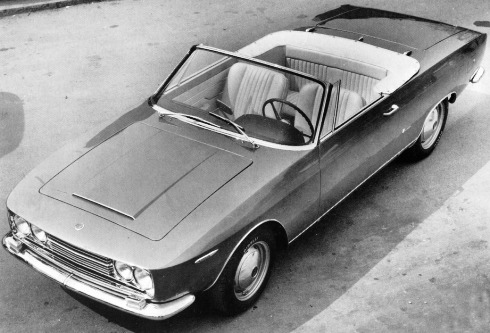
The initial rendition of the Linea Tesa concept on a Fiat 2300 S platform emerged from the skilled hands of Carrozzeria Boneschi. This Spider iteration boasted a distinctive jutting-out tail, a hallmark feature observed in previous Linea Tesa models. Additionally, it sported double twin headlights and a sleek side profile, further emphasizing the cohesive and avant-garde design language synonymous with the Linea Tesa aesthetic.
1964 Fiat 2300 S Coupé Gazzella
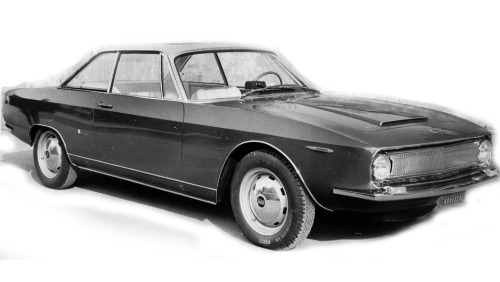
The second Linea Tesa proposal, based on the Fiat 2300 S platform, took the form of a Coupe carrying the esteemed name “Gazzella,” a nod to a “historic” model from Carrozzeria Boneschi’s illustrious lineage. This one-off creation continued the Linea Tesa tradition with its sleek and dynamic design, showcasing a fusion of timeless elegance and innovative flair.
1964 Ford Prototype
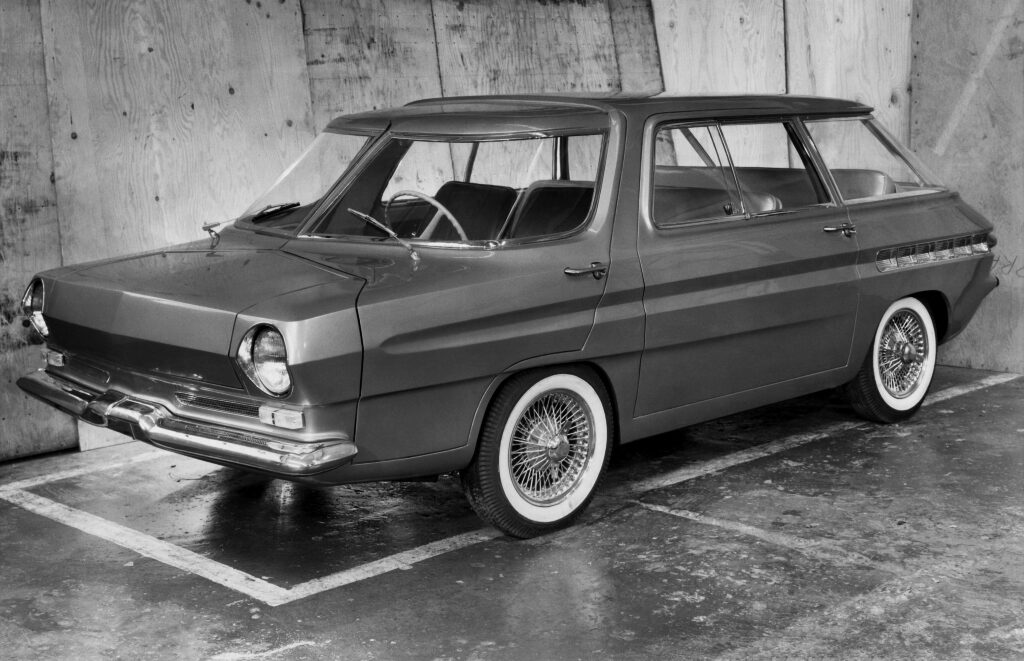
Carrozzeria Boneschi brought the “Linea Tesa” experiment to a close with this prototype on a Ford chassis, bearing a resemblance to the 1960s prototypes crafted by Carrozzeria Ghia for Renault. This final endeavor marked the culmination of the Linea Tesa journey, encapsulating the spirit of innovation and design exploration that defined this distinctive aesthetic movement.
Carrozzeria Boneschi concluded the “Linea Tesa” experiment with this prototype on a Ford chassis that vaguely recalls the 60s prototypes developed by Carrozzeria Ghia for Renault.
1961 Fiat 1500 by Viotti
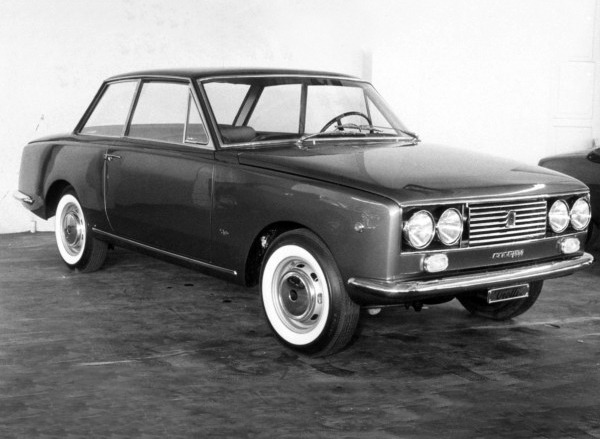
The Fiat 1500 Coupé Viotti, contrary to all Linea Tesa cars, was crafted by Carrozzeria Viotti instead of Boneschi. This unique specimen, born from Rodolfo Bonetto’s “linea tesa” concept, exhibits timeless design with sharp lines and clean cuts. Crafted in Turin, it made its debut at prestigious auto shows in the early 1960s, captivating enthusiasts with its avant-garde aesthetic. Despite the mystery surrounding its production numbers, its exclusivity adds to its allure. The Coupé underwent refinements between appearances, enhancing its striking look. As a symbol of automotive elegance and innovation, it underscores Bonetto’s pioneering legacy in design.


